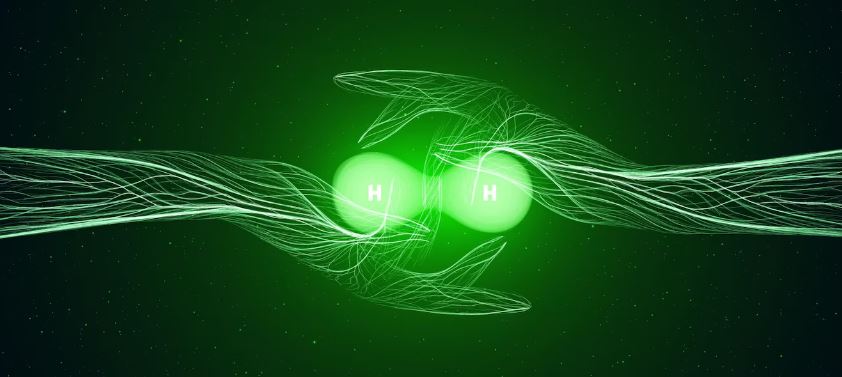Often compared to a cosmic choreography, quantum entanglement provides an incredibly powerful window into how the universe connects far-flung particles via imperceptible threads. Once entangled, two particles remain permanently connected, their states instantly influencing each other even across galaxies in a dance remarkably reminiscent of twin flames responding to invisible music.
Scientists have developed strong theories by studying this phenomenon in greater detail, which significantly contradicts Einstein’s ideas about time and locality. Though skeptic Albert Einstein called it “spooky action at a distance,” contemporary experiments have significantly advanced our knowledge, showing that entanglement alters our understanding of information, connection, and causality itself rather than just hinting at enigmatic behavior.
| Information | Details |
|---|---|
| Phenomenon | Quantum Entanglement |
| Key Scientists | Albert Einstein, Erwin Schrödinger, John Bell |
| First Theorized | 1935 (EPR Paradox) |
| Modern Applications | Quantum computing, quantum teleportation, quantum cryptography |
| Notable Experiments | Bell Test Experiments, Aspect’s Experiments, 2015 loophole-free tests |
| Key Concept | Instantaneous correlation without faster-than-light communication |
Experiments conducted in recent decades under the direction of trailblazing thinkers like Alain Aspect have remarkably demonstrated that quantum entanglement defies the rules that classical physics once revered. By meticulously designing experiments that addressed long-standing gaps, physicists have firmly moved the discussion from philosophical argument to empirical reality.
Through the use of highly effective photon detectors and well-planned experiments, scientists have shown that entangled particles share a fate that is mysteriously intertwined even when they are separated by astronomical distances. The development of new quantum technologies, such as highly adaptable quantum computers and ultra-secure communication networks, has been astonishingly accelerated by such demonstrations.

Practically speaking, encryption benefits greatly from the randomness that entanglement ensures. By employing entangled particles, Quantum Key Distribution (QKD) provides a level of security that traditional techniques could never hope to match by guaranteeing that any attempt at eavesdropping is immediately detectable. The promise of entanglement is particularly evident in the context of an expanding cybersecurity environment, where data breaches present ongoing threats.
The competition to use quantum entanglement for communication has accelerated dramatically in the last ten years. Now, scientists from different continents are working together, particularly to extend the initial threads of what may eventually develop into a complete quantum internet. Systems that can teleport quantum states are being developed, tested, and refined through strategic collaborations between governments and research institutions.
Entanglement-driven technologies have been used by NASA and other organizations to significantly enhance long-range communication systems in the context of deep-space exploration. Engineers are creating next-generation communication arrays that can send massive amounts of data over interplanetary distances with little loss by taking advantage of the randomness and coherence of entangled photons.
Since remote work changed the way we communicate online during the pandemic, there was a greater need than ever to create quicker, safer ways to transmit information. These demands can now be met by quantum communication, which is powered by the fundamental characteristics of entanglement and offers capabilities that traditional systems can no longer match.
Scientists are already creating prototypes of quantum computers by incorporating quantum entanglement into computational procedures. These machines can solve problems in seconds as opposed to millennia for conventional supercomputers. By automating processes, streamlining logistics, and simulating intricate biological systems at speeds far faster than previously possible, these developments are revolutionizing entire industries.
Thanks to the work of daring scientists, quantum entanglement has developed into a highly useful tool for science, technology, and even philosophy, surpassing its theoretical beginnings. The idea that entanglement implies the universe is more interconnected than our senses reveal has recently resurfaced in philosophical discussions. This idea strikes a deep chord in a society that is becoming more interconnected by the day.
Researchers are developing hybrid systems that could significantly speed up discoveries in a variety of domains, including financial modeling, drug development, and climate prediction, by working with AI tools and quantum hardware platforms. The efficiency and adaptability of solutions to some of humanity’s most pressing problems could be significantly increased by combining entanglement-based computation with AI-driven pattern recognition.
Universities and think tanks have realized the importance of demystifying these intricate ideas for a wider audience in the context of quantum education. Institutions are fostering a new generation of thinkers who can use the amazing power of entanglement to propel advancement through thoughtful curriculum development and public outreach.
With entanglement at its core, quantum mechanics has shown us a universe composed of probabilities, potentials, and astounding connections, in contrast to classical physics, which has taught us to expect predictability and certainty. It is both humbling and incredibly exciting to realize that two particles, separated by unfathomable distances, can still be a part of a single, cohesive whole.
Entanglement will continue to transform industries like transportation and telecommunications in the years to come. The entanglement woven throughout the quantum tapestry will be used more and more in innovations like real-time predictive modeling of complex systems, teleportation-based logistics coordination, and quantum-secured satellites.
Entanglement is more than just a strange scientific phenomenon; it is a remarkably resilient reminder that there is a deeper, more enigmatic dimension beneath the surface of what we refer to as reality, where time, space, and even individuality give way to a shared existence. Entangled particles show how the universe may function through collective dynamics that are invisible to the human eye, much like a swarm of bees moves with fluid precision.
